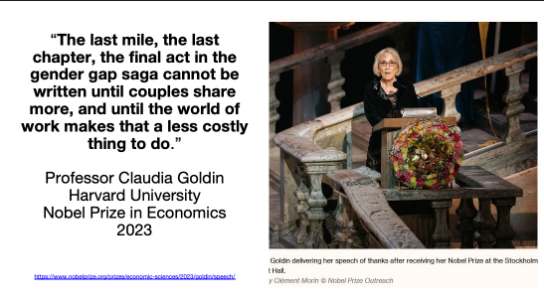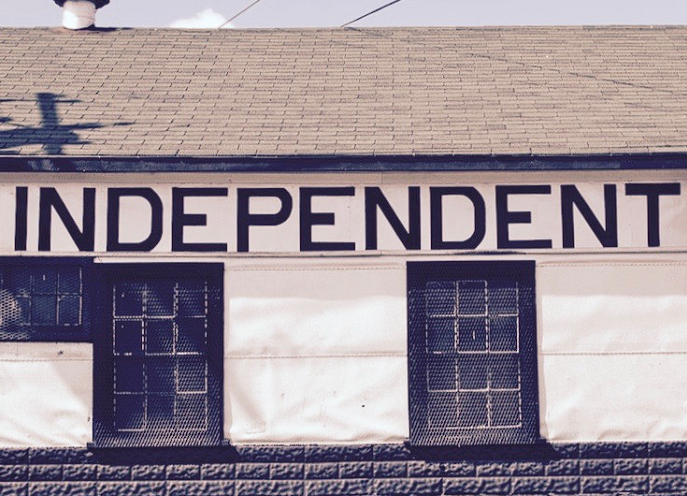I am discovering the work of Iris Marion Young, a philosopher and political scientist who wrote much about justice. I find her work relevant to think about corporations and their responsibility, because she discusses the notion of personal responsibility, which refers to what each individual is responsible for, and social structures, which designate the opportunity set within which individuals can act.
Corporations lie at the intersection of personal responsibility and social structures.
Corporations implicate individuals: corporations do not make decisions; instead, individuals employed by corporations do. As such, when we speak about corporate responsibility, generally the responsibility for a past or future action of a corporation, we implicitly involve one or more individuals, whose decisions underlie the corporate action and whose practices are implicated in carrying out the action.
For instance, when Corporation X has appointed two female board members, the appointment implicates individuals who select prospective candidates for two board seats; individuals who interview the selected prospective candidates; individuals who select among all prospective candidates and retain two of them; and individuals who communicate with the candidates to let them know that they have or have not been appointed. Corporate responsibility is built upon individuals who make decisions, and on individuals who engage in practices.
Corporate responsibility, then, implicates individual responsibility. Individuals have agency when their decisions and practices involve their judgement; this agency implicates their responsibility: a person can be held responsible for decisions and practices that involve their agency. In her book Responsibility for Justice, Iris Marion Young writes that “a responsible person tries to deliberate about options before acting, makes choices that seem to be the best for all affected, and worries about how the consequences of his or her action may adversely affect others.” (p. 25)
The possibility of agency, and lack thereof, opens the door for social structures to matter in the context of corporate responsibility. Social structures may not be under the purview of an individual’s agency, yet have implications for what an individual can and must do. I use the expression ‘social structure’ broadly to designate any practices, laws, norms that regulate individuals’ interaction within society and delimit the opportunity set within which they exercise agency.
In corporations, for instance, individuals make decisions and engage in practices not simply because they want to, but also because they have a duty as a part of their being employed. These duties may have their source in an individual contract, a collective agreement or an implicit understanding; some of these sources implicate more of the individual’s agency (e.g., the individual contract that the individual negotiates, at least to some extent) and others less (e.g., the collective agreement, the implicit understanding). From the perspective of the individual, elements that she cannot exercise agency over are a matter of structure (e.g., the collective agreement) that she cannot influence.
Who is responsible for decisions and practices in which structures are implicated? One can consider individuals who did not have a choice but to participate in the practices resulting from structures. They have no or few alternatives but to act in conformity with the structures. For instance, consider the individual who needs to communicate to an employee that he is being fired. The individual may refuse to communicate this termination, at the price of losing her own job. Is she responsible for firing the employee? Perhaps she could have prevented the firing at at a very high cost to herself.
Where does responsibility start? Does being responsibility require that someone does everything they can from preventing harm, injustice, etc. to someone else, even if doing this everything would entail remarkable sacrifices? I am reminded of this question as I am reading Bill Browder’s Red Notice, where he details how his lawyer, Sergei Magnitsky endured torture, and was eventually killed, as he refused to tell the false stories his torturers wanted him to tell.
More generally, how much responsibility do individuals have for engaging in practices that abide by structures and for perpetuating these structures? If an individual draws up a shortlist of candidates to interview for two board positions, and only considers men, because his network consists of men, how much responsibility does this individual bear? The individual might not have had the possibility to build a more diverse network because he works in an industry that has been traditionally male and that include very few if any women.
The point is that structures have implications for individuals who are embedded in them and for the responsibility that they may or may not have in making decisions and engaging in practices within those structures. From this perspective, it is important to consider structures when speaking of corporate responsibility. Before we go about deciding who has what responsibility for changing or maintaining structures, we need to understand the full extent of structures that are implicated in the lives of individuals involved with corporations.
To think about these structures, it is helpful to envision the path of the daily lives of any of these individuals. Where do they wake up? Who lives with them? Who is dependent on them? What obligations await them before work? What defines their work? Is their work paid? At what time do they start to work? How to they get to work? Where do they work? Who works with them? How long do they work? When do they leave work?
Answering these questions illustrates the singular network of relations that individuals who are involved with corporations are embedded in. These relations are defined by the family of the individual, their religion, the government(s) of the country/region/town where they live, the various associations they belong to, and, of course, the corporations they are employed in or otherwise involved with.
To anchor, discuss and determine corporate responsibility, one needs to understand the web of relations in which individuals are embedded, which enacts and defines social structures, as well as the personal responsibility that individuals can have within this structuring web of relations.
Your thoughts?
Photo adapted from davetoaster








